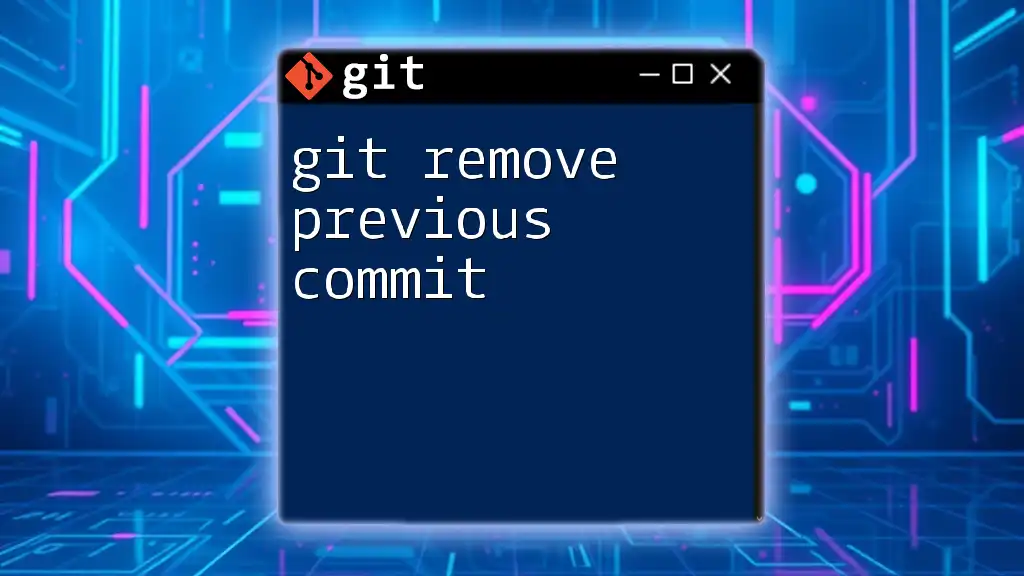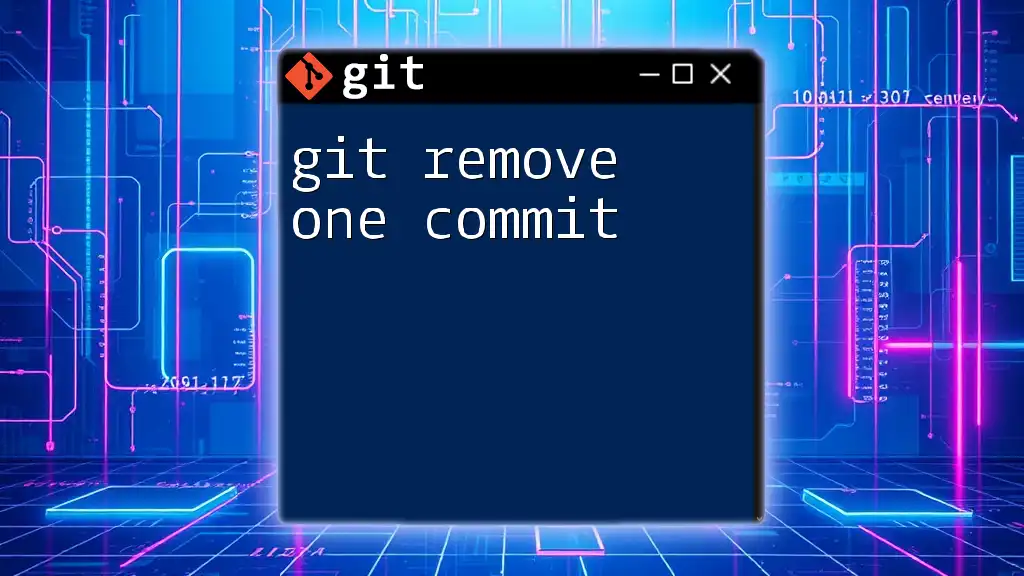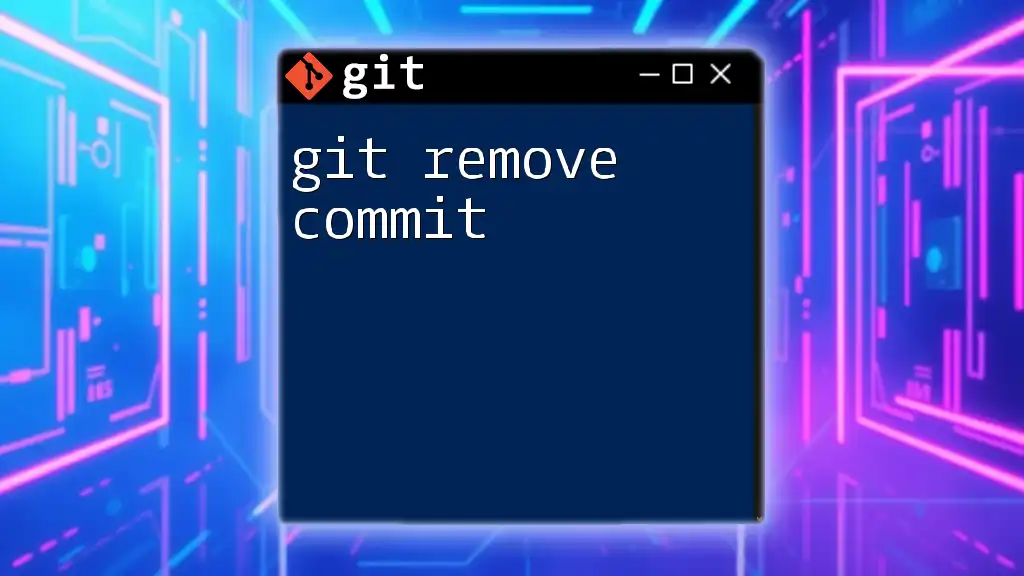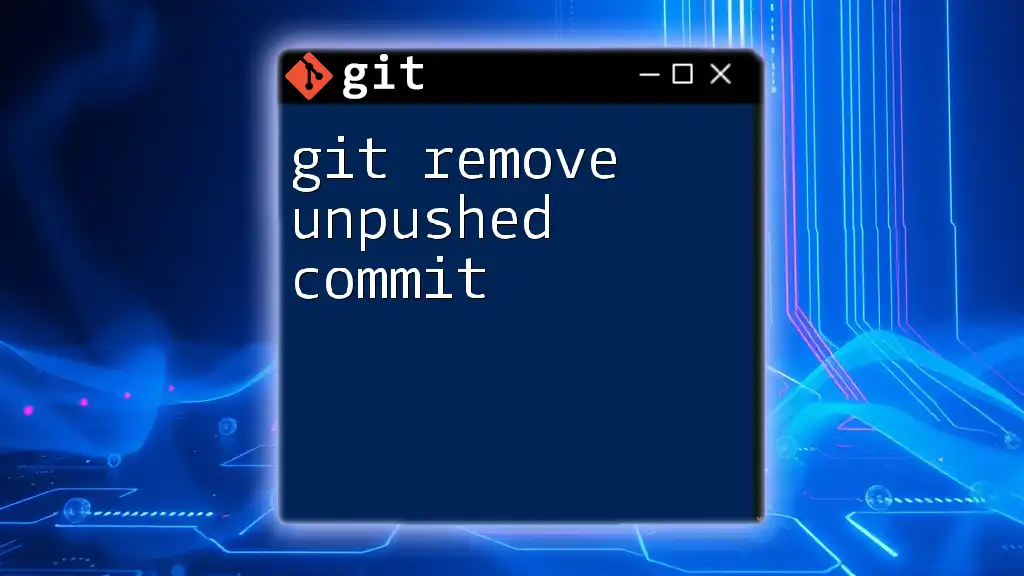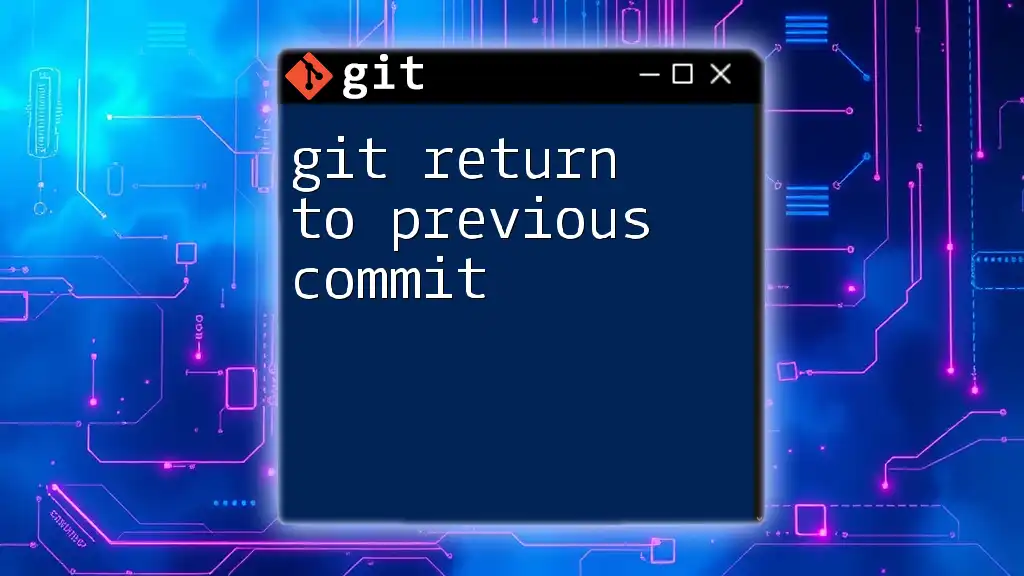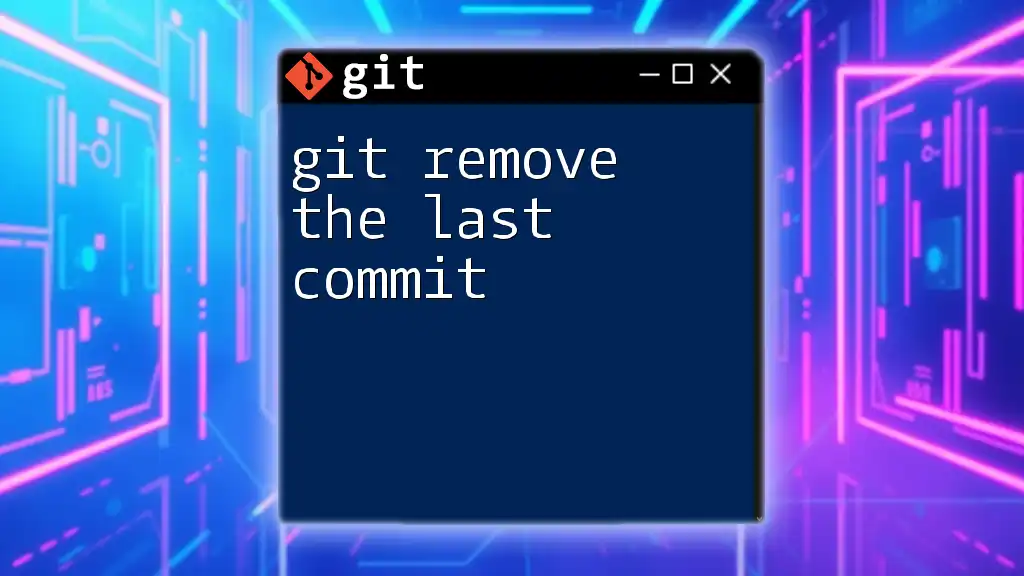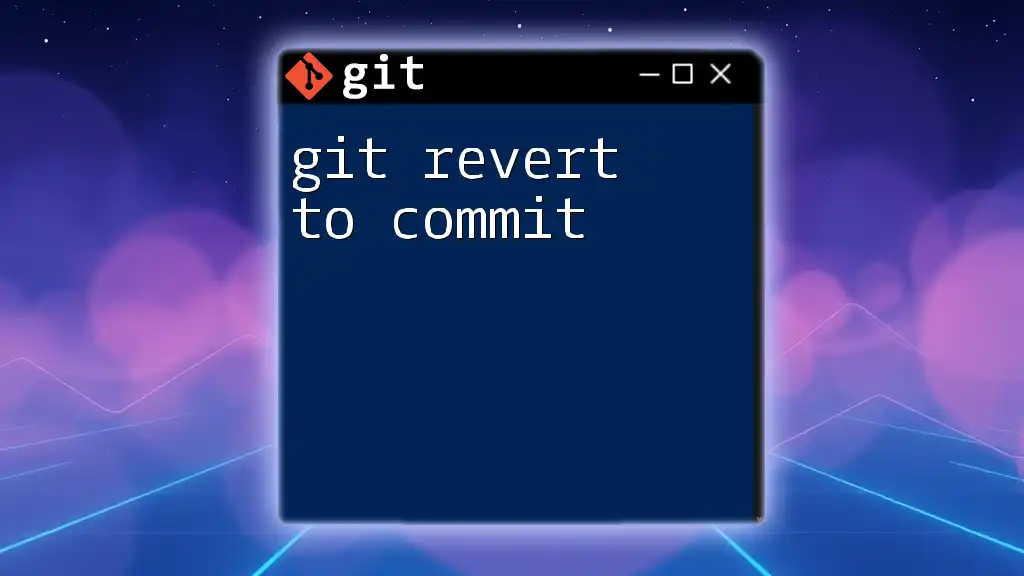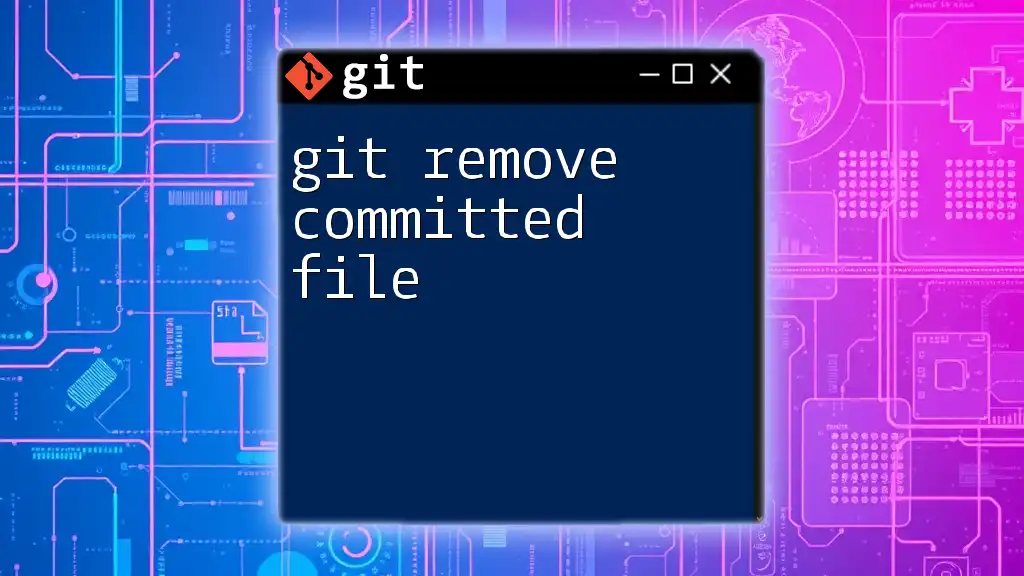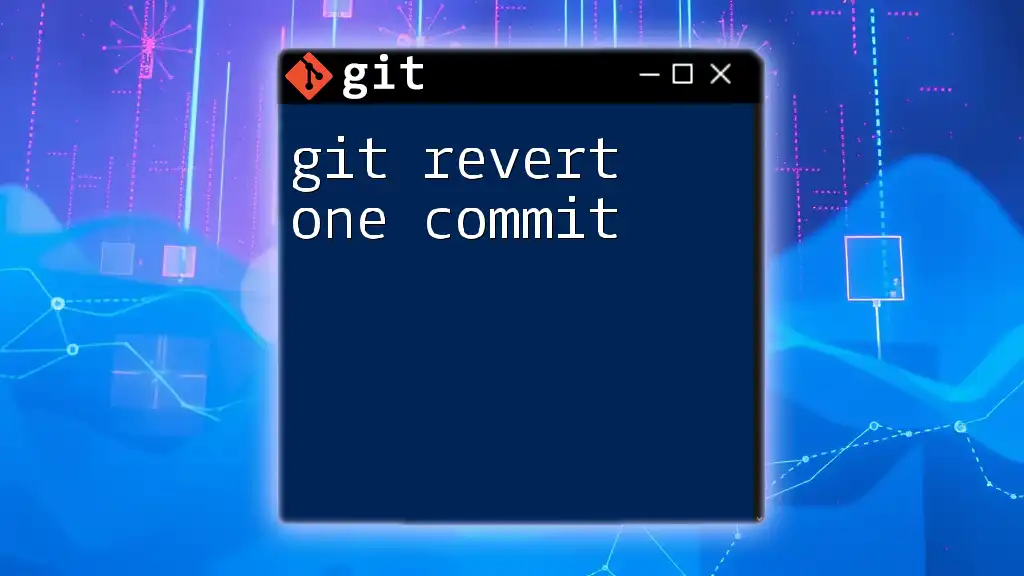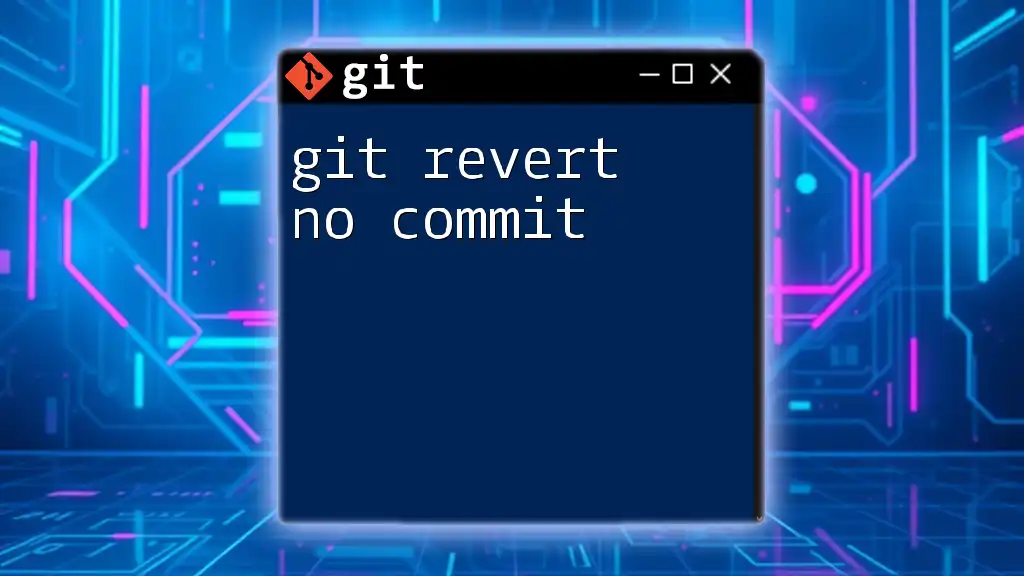To remove the previous commit in Git while keeping the changes in your working directory, you can use the following command:
git reset --soft HEAD~1
Understanding Git Commits
What is a Git Commit?
A commit in Git is a snapshot of your project at a specific point in time. It records changes made to one or more files throughout your project’s history. Each commit contains a unique identifier (SHA), the author’s information, the date, and a commit message describing the changes. This historical record allows you to track project evolution, collaborate effectively, and revert back if necessary.
The Structure of a Commit
Each commit holds crucial metadata, including:
- Commit Message: A brief description of the changes made. A well-written commit message helps others understand the purpose of the changes.
- Author Information: Displays who made the changes.
- Timestamp: Indicates when the changes were made.
Understanding this structure is vital for effective collaboration and documentation within your project.
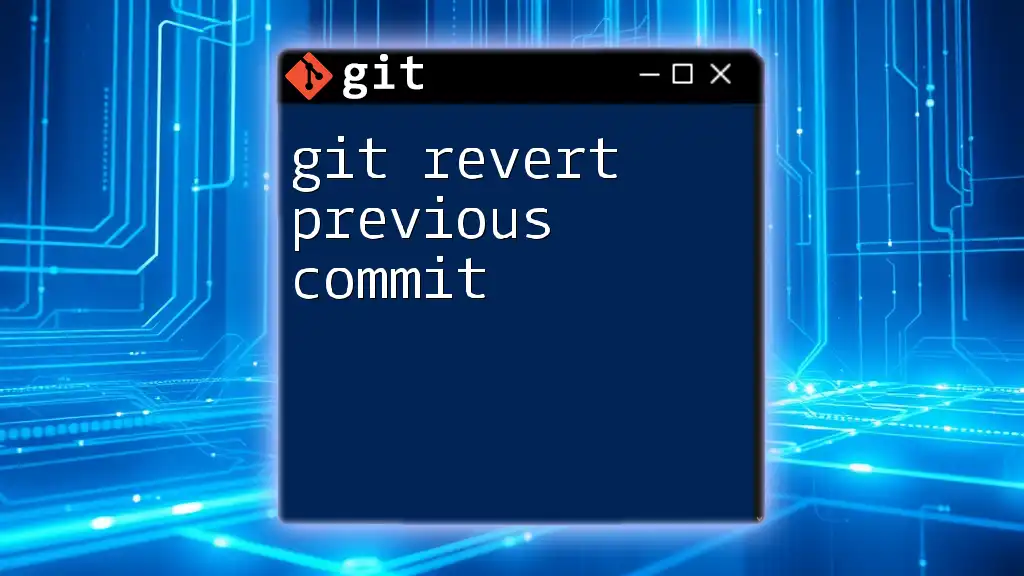
Reasons to Remove Previous Commit
Correcting Mistakes
Mistakes happen. Sometimes, a commit may contain errors, such as implementing incorrect features, bugs, or undesired changes. Removing a previous commit allows you to correct these blunders swiftly and maintain the integrity of your project.
Cleaning Up Commit History
A clear commit history is essential, especially in collaborative environments. It helps team members understand the project’s evolution and improves readability. Removing unnecessary or cluttered commits helps maintain focus on the important changes, fostering a professional presentation of the project.

Methods to Remove Previous Commit
Using `git reset`
What is `git reset`?
`git reset` is a command used to undo local changes and modify the staging index. This command effectively "resets" your current HEAD to a specified state.
Types of `git reset` Options
-
Soft Reset
A soft reset moves the HEAD pointer but leaves your working directory and index as is. This is useful if you want to uncommit changes but keep them staged for further modifications.git reset --soft HEAD~1In this example, the last commit is removed from the history, but the changes remain in the staging area, allowing for quick amendments or message modifications.
-
Mixed Reset
A mixed reset (which is the default for `git reset`) removes the commitment and resets the index while preserving your working directory. This means your changes will still be present, but they won't be staged.git reset --mixed HEAD~1Use this when you need to adjust changes but don’t want to lose them completely.
-
Hard Reset
A hard reset completely discards all changes made in the specified commits, resetting both the index and working directory. This means any changes made after that commit will be lost.git reset --hard HEAD~1Caution: This command can lead to data loss if you haven’t saved changes elsewhere. Always double-check what you’re resetting.
Using `git revert`
What is `git revert`?
Unlike `git reset`, the `git revert` command creates a new commit that effectively undoes the changes introduced by a previous commit. This is particularly useful for maintaining a clean and accurate commit history, especially in collaborative environments.
How to Use `git revert`
To revert the last commit:
git revert HEAD
This command generates a new commit that undoes the changes from the specified commit while keeping your project history intact. This method is excellent for public repositories, allowing you to reverse changes without rewriting history.

Best Practices for Removing Commits
Analyze the Impact
Before you act, it’s crucial to analyze the potential impact of removing a commit. This includes understanding how the changes will affect collaborative teams and dependencies in your project. Always consider the perspectives of fellow developers.
Use Descriptive Commit Messages
Clear and descriptive commit messages prevent the need to remove commits in the first place. By clearly communicating the purpose of each commit, you make it easier for others (and yourself) to trace back through project history and understand the evolution of the code.
Regular Backups and Branching
Utilizing branches for experimentation allows you to test features without impacting the main codebase. If an experimental change doesn’t work out, you can simply delete the branch—keeping your main branch clean. Additionally, regularly backing up your code ensures that you can recover lost changes if necessary.

Conclusion
Understanding how to effectively remove a previous commit in Git is essential for maintaining a clean and organized project history. Whether employing `git reset` for local changes or `git revert` for collaborative settings, knowing these commands empowers you to manage your Git repository efficiently. Always analyze the outcomes and maintain clear communication in commit messages to enhance your workflow. Embrace these practices, polish your Git skills, and elevate your version control experience!
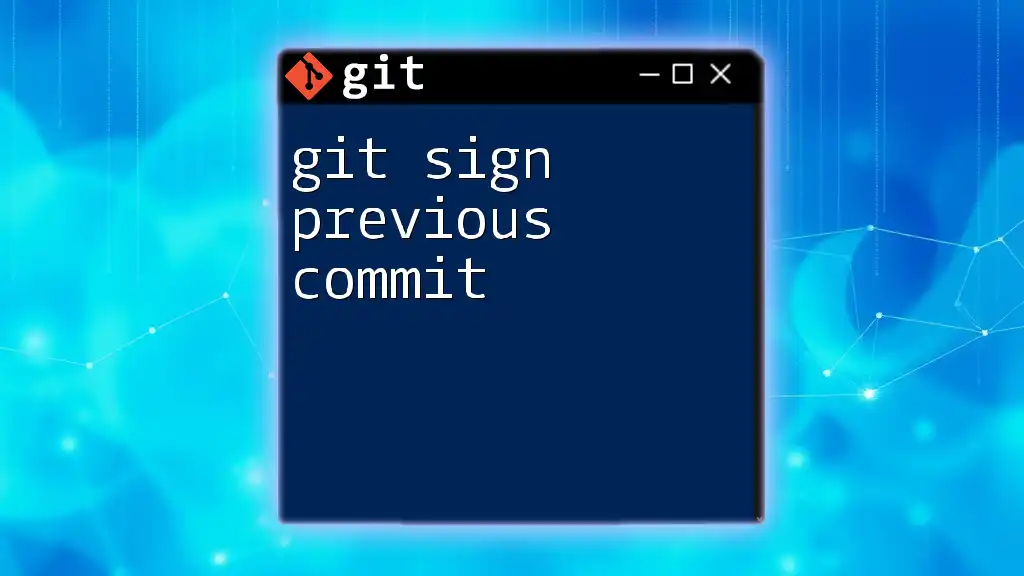
Additional Resources
Recommended Reading
For a deeper understanding, refer to the [official Git documentation](https://git-scm.com/doc).
Helpful Tools
Consider exploring Git GUIs like Sourcetree or GitKraken, which facilitate visual navigation through your Git history, helping identify unnecessary commits easily.

